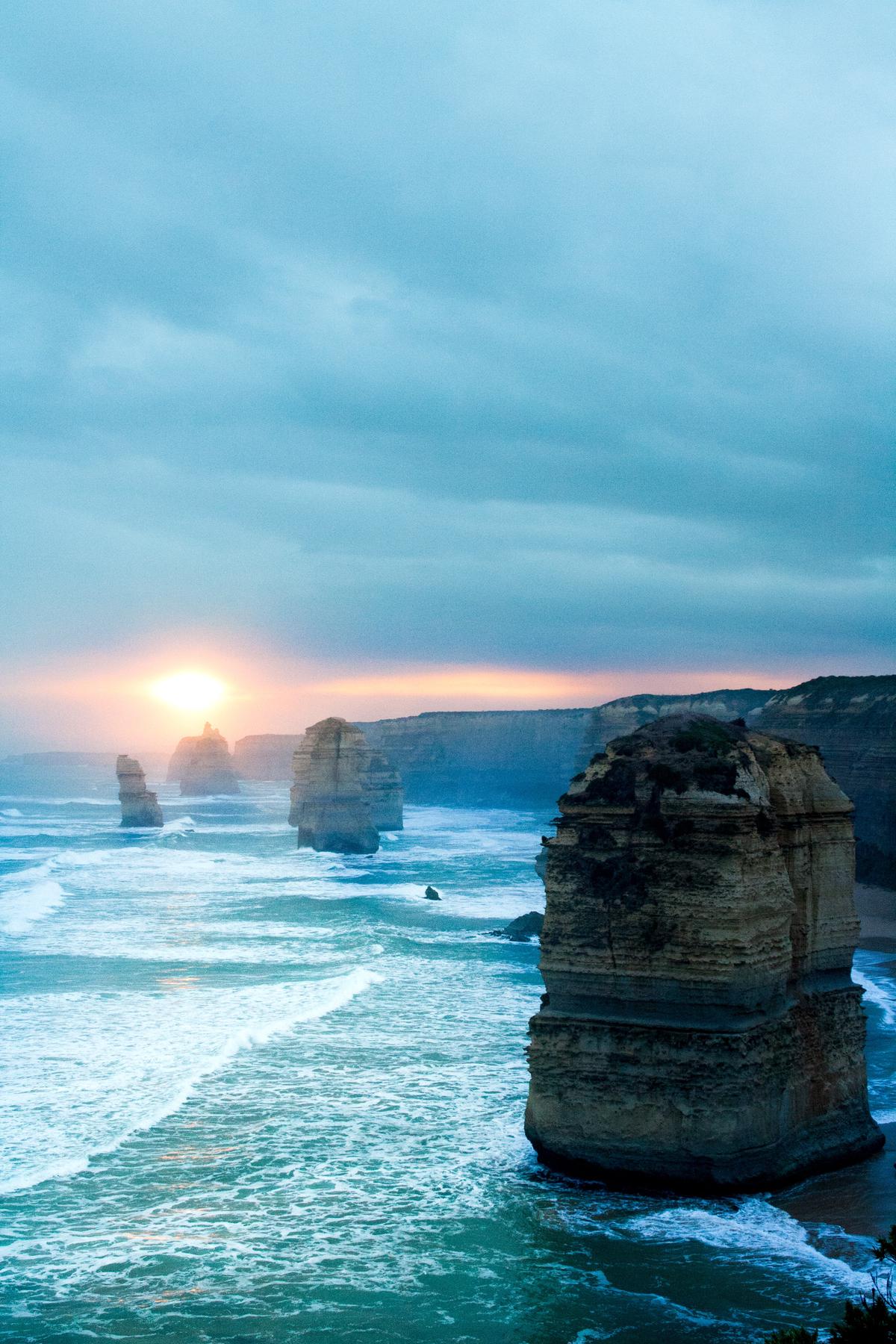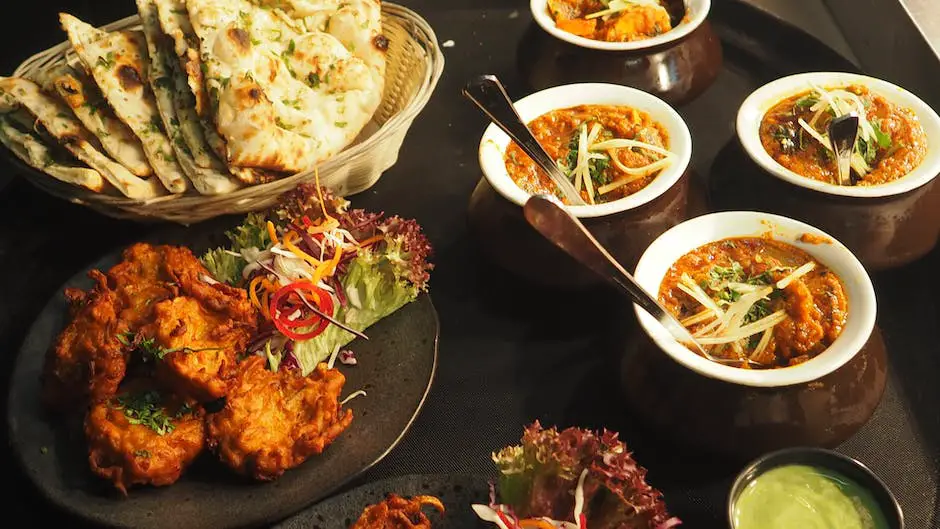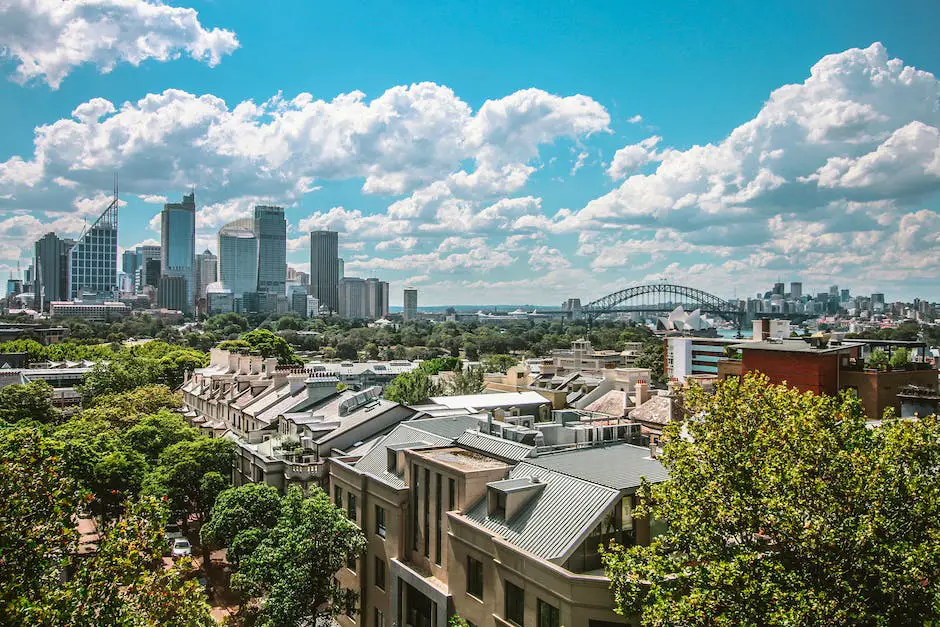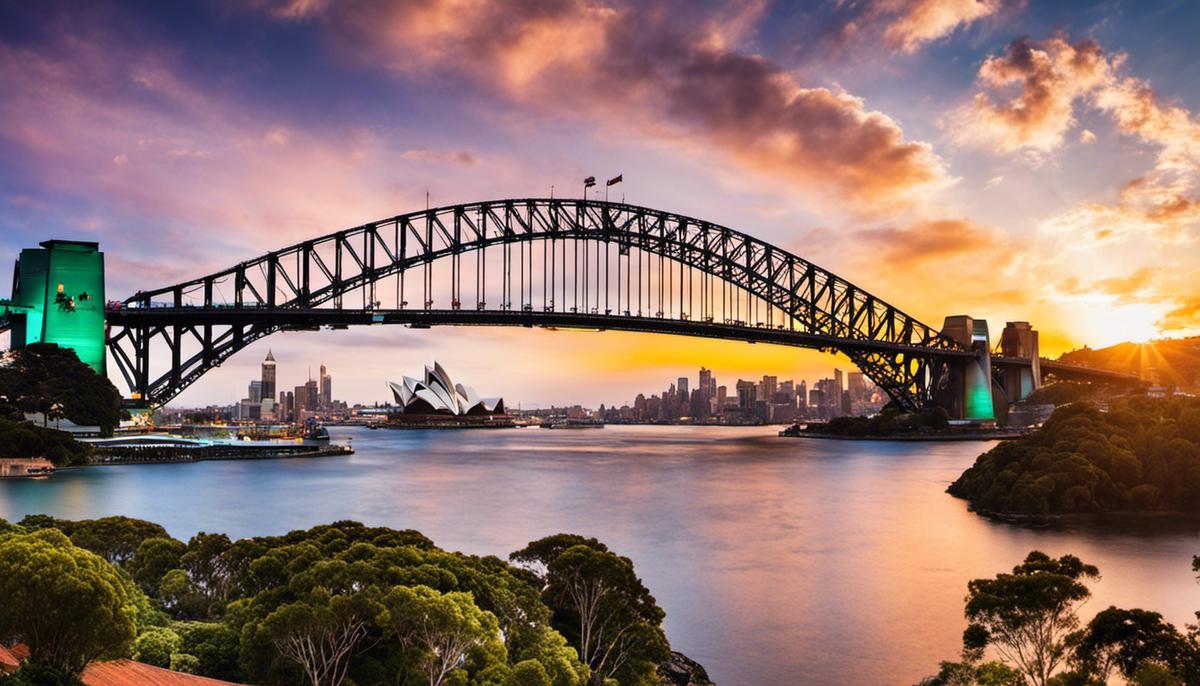With its stunning natural landscapes, vibrant city life, rich cultural tapestry, and an abundance of outdoor adventures, the charm of Australia invites explorers from every corner of the globe. Experience the glittering harbor of Sydney or lose yourself in the thriving arts scene of Melbourne. Don’t miss out on marveling at the majesty of natural wonders like the Great Barrier Reef, Uluru, and the Daintree Rainforest. The Australian journey reverberates with not just sights and sounds but is also a treat for taste buds, with unique Aussie dishes to savor. For those thirsting for thrill, an extensive assortment of outdoor activities awaits discovery. Valuable advice concerning practical issues like visa procedures, local transportation, and tech-savvy travel aids elevate the comfort of your experience.
Iconic Attractions and Destinations
Sydney: The City of Sailing
Sydney, one of Australia’s largest cities, showcases its unique culture with prominent landmarks like the Sydney Opera House and Sydney Harbor Bridge. Often regarded as one of the most beautiful harbors globally, Sydney Harbor offers an unforgettable sailing experience. Also, the Sydney Tower Eye provides a panoramic view of the city.
While there, don’t forget to check out the UNESCO World Heritage-listed Sydney Opera House. This iconic structure not only offers world-class performances but also boasts fascinating architecture that must not be missed. Aside from its various cultural attractions, Sydney is also home to some stunning beaches, including Bondi Beach, loved by locals and visitors alike.
Melbourne: A Hub for Sports and Arts
Contrasting Sydney’s coastline charm, Melbourne thrives in its vibrant sports and arts scene. The city is well-known for its significant sporting events such as the Australian Open and the Melbourne Cup. Melbourne is also home to the iconic Melbourne Cricket Ground, which is a must-visit for sports enthusiasts.
The city’s art scene can be experienced through its numerous galleries, street art, and live music venues. For instance, the National Gallery of Victoria exhibits stunning collections, and the Melbourne Arts Precinct offers a variety of performances. Furthermore, Melbourne is renowned for its food and coffee culture, making it a culinary haven for foodies.
Brisbane: Subtropical Wonderland
Brisbane, the capital of Queensland, offers subtropical warmth all year round. Popular tourist attractions include the South Bank, Queensland Art Gallery, and Gallery of Modern Art. At the Lone Pine Koala Sanctuary, you can interact with Australia’s iconic koala bears and other native species.
For a splendid view of the city, head over to Mt. Coot-tha lookout. Brisbane also allows easy access to Moreton Island and the Gold Coast, both famed for their beach beauty and marine life.
Great Barrier Reef: World’s Largest Coral Reef System
The Great Barrier Reef, another UNESCO World Heritage site, is an underwater paradise. It is the largest coral reef system in the world, stretching over 2300 kilometers. Home to diverse marine life, it provides a surreal snorkeling and scuba diving experience.
Most visitors access the Reef via Cairns or the Whitsunday Islands. Participants are highly encouraged to follow guidelines related to Reef protection and conservation when visiting.
The Red Center: Home to Uluru
Located in Australia’s Red Center, Uluru (Ayers Rock) is a massive sandstone rock formation that’s sacred to the indigenous Anangu people. An awe-inspiring spectacle of natural beauty, the rock dramatically changes color at sunrise and sunset. While here, visitors can learn about Aboriginal culture and the rock’s spiritual significance.
Close by is Kata Tjuta (The Olgas), another rock formation that visitors should explore. Both sites are protected and acknowledged by UNESCO as World Heritage sites.
Daintree Rainforest: Ancient Ecosystem
The Daintree Rainforest, part of the Wet Tropics World Heritage Area, is the world’s oldest surviving tropical rainforest. It offers an array of unique flora and fauna, including the ancient ferns and the elusive cassowary, a flightless bird native to northern Australia.
Visiting the Daintree Rainforest typically involves guided walks and river cruises. For a different experience, consider the Jungle Surfing Canopy Tours: zip-lining between the rainforest’s tall trees.
Australia is famous for its myriad of attractions that encapsulate its ecological diversity, individualistic culture, and historic significance. Every distinctive site promises to offer a unique Australian experience, leaving a lasting impression on each visitor.

Australian Culture and Cuisine
The Cultural Tapestry of Australia: An Amalgamation of Multicultural Impressions
Australia stands prominent for its cultural diversity, featuring a distinctive amalgamation of Indigenous ancestry and influences from Europe, Asia, and Africa. The Aboriginal culture of Indigenous people, one of the world’s oldest ongoing cultures, has left an indelible imprint on the nation’s traditions, dialects, and artistic expressions. Aboriginal traditional arts span an array of practices such as storytelling through songs and dance, painting, woodworking, and playing of the didgeridoo, a unique aerophone.
The country is also affluent in its variety of festivals that honor its Indigenous roots and multiculturalism. Celebrations like Australia Day, Sydney Mardi Gras Festival, Melbourne International Arts Festival, and the Garma Festival of Traditional Cultures in the northeastern region of Arnhem Land are momentous events that tourists are welcomed to participate in, to delve into the enthralling cultural spectrum of Australia.
English dominates the linguistic landscape of Australia, it’s flavor, however, has been significantly influenced by Aboriginal and various furthers migrant’s tongues. Australians or “Aussies” are renowned for their singular “Strine” accent accompanied by a set of local jargon and idioms. The linguistic variety of Australia enhances the intriguing facets of the nation’s cultural legacy.
Australian Cuisine: A Flavorful Mix of Old and New
Australia’s culinary scene reveals a delectable mix of traditional and contemporary, grounded in local produce and international influences. Indigenous Bush Tucker, characterized by uniquely Australian ingredients like kangaroo, emu, crocodile, witchetty grubs, and various native fruits and seeds, is integral to traditional Australian cuisine.
Modern Australian cuisine, also known as “Mod Oz” cuisine, is diverse and multicultural, reflecting the country’s demographic makeup. It leans heavily on Seafood, with local favorites like barramundi, flathead, and snapper. Specialties include the iconic Australian meat pie, Vegemite sandwiches, and fish ‘n’ chips wrapped in newspaper, which can be sampled in local pubs and casual eateries.
Sweet treats such as the Pavlova, a meringue dessert named after the Russian ballerina Anna Pavlova, and the Lamington, a square-shaped sponge cake coated in chocolate and desiccated coconut, are also part of Australia’s culinary heritage.
The Australian beverage scene is equally exciting, with the country known for its exceptional wines, particularly Shiraz and Chardonnay. Australia’s burgeoning craft beer industry is also a hit, with a plethora of independent breweries offering unique flavor profiles and brews.
To fully experience Australian cuisine, cities such as Melbourne, Sydney, and Adelaide are culinary hotspots with their vibrant food markets, innovative restaurants, and food festivals.
Tourists are always enamored by the unique culture and gastronomy of Australia, which provides a truly distinctive and unforgettable experience. Whether it’s tucking into a kangaroo steak at a high-end restaurant in Sydney or partaking in a traditional bush tucker meal amid the boundless expanse of the outback, Australia’s vibrant culture and diverse cuisine offer a wide array of exciting adventures.

Outdoor and Adventure Tourism
Embracing the Outdoors in Australia: Much More than a Walkabout
From the sun-kissed beaches of Queensland to the rugged wilderness of Tasmania, Australia boasts a breadth of outdoor activities that caters to all tastes and aptitudes. Encompassing a vast landscape, the continent is teeming with an exceptional mix of wildlife, picturesque scenery, and one-of-a-kind geological features, making it the go-to hub for thrill-seeking outdoor enthusiasts and adventure tourists.
Surfing Spots: Riding the Waves Down Under
Australia’s extensive 50,000 km coastline is a haven for surfing enthusiasts. World-renowned for its top-quality waves, Australia offers several top surfing spots. The Gold Coast in Queensland is famous for its consistently good surf breaks like Snapper Rocks and Burleigh Heads. Meanwhile, Bells Beach in Victoria has been synonymous with professional surfing competitions for over half a century. Margaret River in Western Australia isn’t just a world-class winemaking region; it also offers powerful, high-quality waves for the experienced surfers. Surfing seasons generally peak during the summer months (December through February), but good conditions can be found year-round.
Hiking Trails: All the Wonders of the Outback
Australia’s diverse landscapes provide an abundance of hiking opportunities. From coastal treks to desert jaunts, there is a trail for everyone. Bushwalking in the Blue Mountains, trekking through Tasmania’s Overland Track, or traversing the Larapinta Trail in the Red Centre are just some of the iconic hikes you can undertake. The best time for hiking depends largely on the region and its climate; however, Autumn (March to May) and Spring (September to November) tend to provide the most pleasant conditions.
Wildlife Safaris: A Unique Encounter with Nature
Australia’s unique and diverse wildlife is a major draw for tourists. Tourists can observe kangaroos in their natural habitat in the Kangaroo Island, cuddle a koala in the Healesville Sanctuary, or scuba dive with great white sharks in Port Lincoln, South Australia. Guided wildlife safaris are especially popular, spanning over several days and providing comprehensive encounters with Australia’s wildlife. The best time to visit for wildlife viewing is surprisingly during the winter months (June through August) when animals are more active.
Exploring the Deep Blue: Australia’s Spectacular Scuba Diving Sites
Renowned as being home to some of the world’s finest scuba diving locations, Australia features prominently on many divers’ bucket lists. The crown jewel of diving locations is the UNESCO World Heritage listed Great Barrier Reef. Spanning over 2,300km, this vibrant ecosystem boasts a diverse array of marine life, promising a thrilling underwater experience. Other prime diving spots include the SS Yongala Wreck near Townsville, a thriving habitat for diverse marine species, as well as the Ningaloo Reef in Western Australia, where divers are granted the unforgettable experience of swimming with whale sharks and manta rays. The best time to explore these wonders of the deep is during Australia’s winter months from June to August, when water visibility is at its finest.

Practical Information and Travel Tips
How to Enter Down Under: Understanding Australian Visa Procedures
Prior to embarking on a journey to Australia, it’s crucial to be informed about entry requirements. Unless you hail from a country that is included in the Electronic Travel Authority (ETA) arrangement or eVisitor scheme, you’ll need to apply for an Australian visa. The ETA opens up Australia to citizens from the USA, Canada, and some other countries, by allowing multiple entries within a year, with a maximum stay of three months for each visit. It’s also something you can conveniently apply for online. For citizens of the European Union, the eVisitor visa applies instead, offering the same conditions. Always ensure to check up-to-date requirements as they may vary.
Weather: A Continent of Different Climates
Australia’s massive size means that it boasts a wide range of climates. The northern areas are generally warm or hot year-round, while the southern parts have cooler winters. Summers, from December to February, can be particularly hot. The sun’s rays are incredibly strong in Australia, so don’t forget solar protection. Always consider Australia’s harsh and changeable weather when planning your trip.
Currency: The Australian Dollar
The currency in Australia is the Australian dollar. ATMs are widely available, and credit cards are widely accepted, though it’s always beneficial to carry some cash for small purchases. Check currency exchange rates regularly to ensure that you’re getting the best deal.
Transportation: Getting Around Australia
Local transportation differs across Australia. In larger cities like Sydney and Melbourne, trains, buses, and trams are readily available and reliable. Ride-share apps and taxis are also common. For rural areas, consider car rentals, but be prepared for long distances between towns. Numerous airlines offer domestic flights for longer distances.
Health and Safety: Keeping Safe in Australia
Healthcare facilities in Australia offer high-quality service, but it can be expensive for tourists without travel insurance. Make sure to have comprehensive travel health insurance that covers any overseas medical costs, including medical evacuation. The sun can be intense, so sun safety, including hat, sunscreen, and protective clothing, is essential.
Australia has unique and sometimes dangerous wildlife. Take advice from local authorities on how to handle encounters with creatures like snakes and spiders. Beachgoers should swim between the red and yellow flags that signal a patrolled beach.
Useful Apps and Websites: Tools to Plan Your Australia Experience
To make the most of your trip, leverage several mobile applications and websites. Websites like the Australian Tourism Data Warehouse or Visit Australia provide detailed information about attractions, while Skyscanner Australia can assist with flight planning. BOM Weather is an app from Australia’s official weather source. MyTransLink provides detailed information about public transportation in Queensland, and similar apps exist for other states and cities. Australia-specific travel apps like Welcome to Australia and Triple Zero (000) with Emergency + can make your stay safer and more enjoyable.

The allure of Australia boasts of an irresistible mix of pulsating city lights, untouched natural splendor, and exhilarating adventures. Uncover your place in the heart of fascinating cities, encounter the awe-inspiring majesty of UNESCO World Heritage Sites, and delve into the depths of an unparalleled cultural experience. The taste of Australia is as diverse as its landscape, promising an exciting culinary journey for food enthusiasts. For the thrill-seekers, an exciting mix of outdoor thrill and the raw beauty of the land promise an unforgettable adrenaline rush. Simplify your travel with indispensable information and travel tips, ensuring an incredible and seamless Australian expedition. Embrace the Australian experience, and prepare to be captivated by its extraordinary dynamism.





